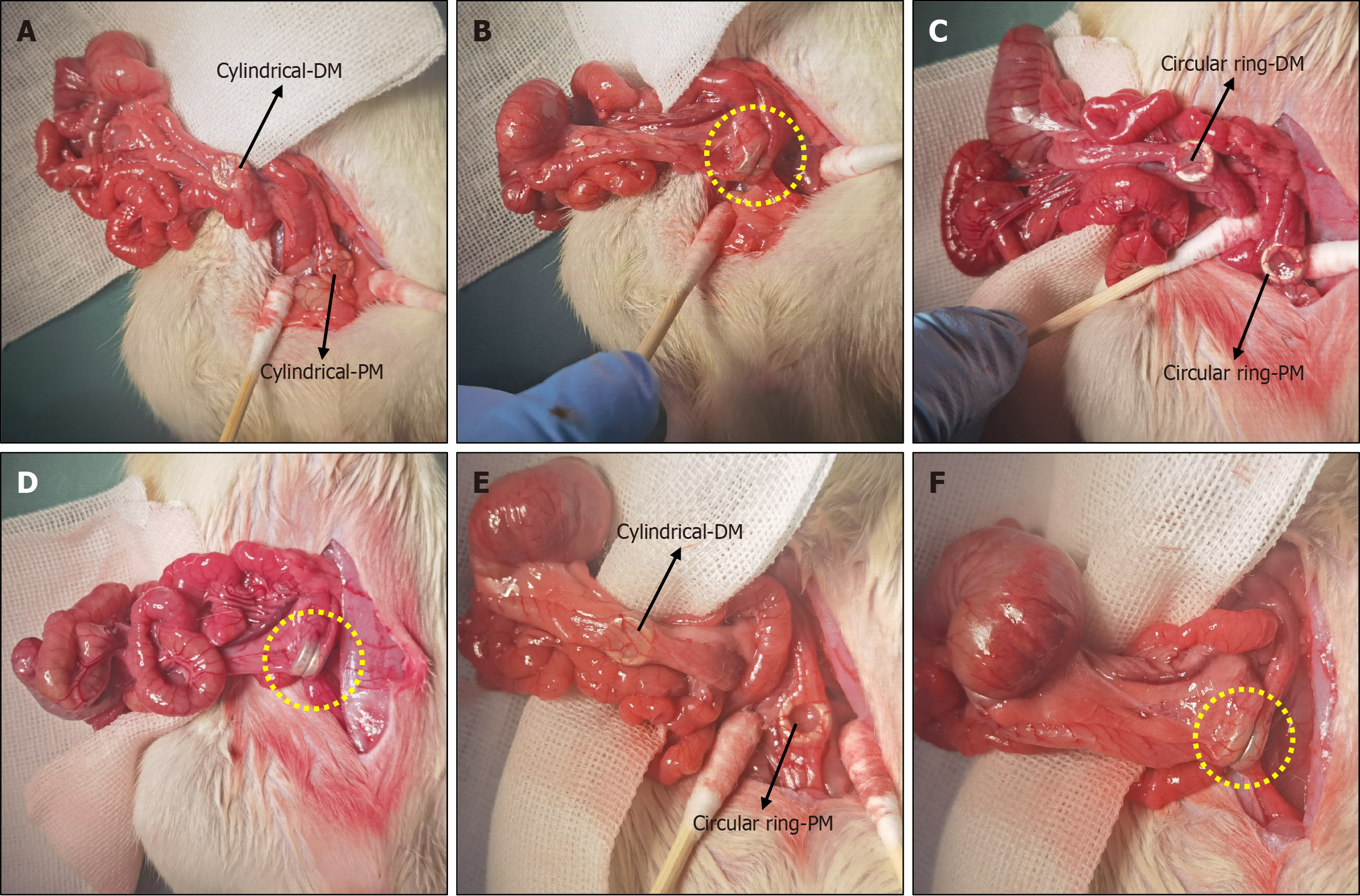Copyright
©The Author(s) 2025.
World J Gastrointest Surg. Feb 27, 2025; 17(2): 94270
Published online Feb 27, 2025. doi: 10.4240/wjgs.v17.i2.94270
Published online Feb 27, 2025. doi: 10.4240/wjgs.v17.i2.94270
Figure 3 Surgical procedure.
A: For the cylindrical group, a cylindrical daughter magnet (DM) and cylindrical parent magnet (PM) were placed in the proximal and the distal end of the colon (black arrows); B: The two cylindrical magnets attracted together (yellow circle); C: For the circular group, a circular ring-DM and circular ring-PM were placed in the proximal and distal ends of the colon (black arrows); D: The two circular ring magnets attracted together (yellow circle); E: For the cylindrical–circular group, a cylindrical-DM and a circular ring-PM were placed in the proximal and distal ends of the colon, respectively (black arrows); F: The cylindrical-DM and circular ring-PM attracted together (yellow circle). DM: Daughter magnet; PM: Parent magnet.
- Citation: Zhang MM, Shi AH, Muensterer OJ, Uygun I, Lyu Y, Yan XP. Comparative study of cylindrical vs circular ring magnets for colonic anastomosis in rats. World J Gastrointest Surg 2025; 17(2): 94270
- URL: https://www.wjgnet.com/1948-9366/full/v17/i2/94270.htm
- DOI: https://dx.doi.org/10.4240/wjgs.v17.i2.94270









